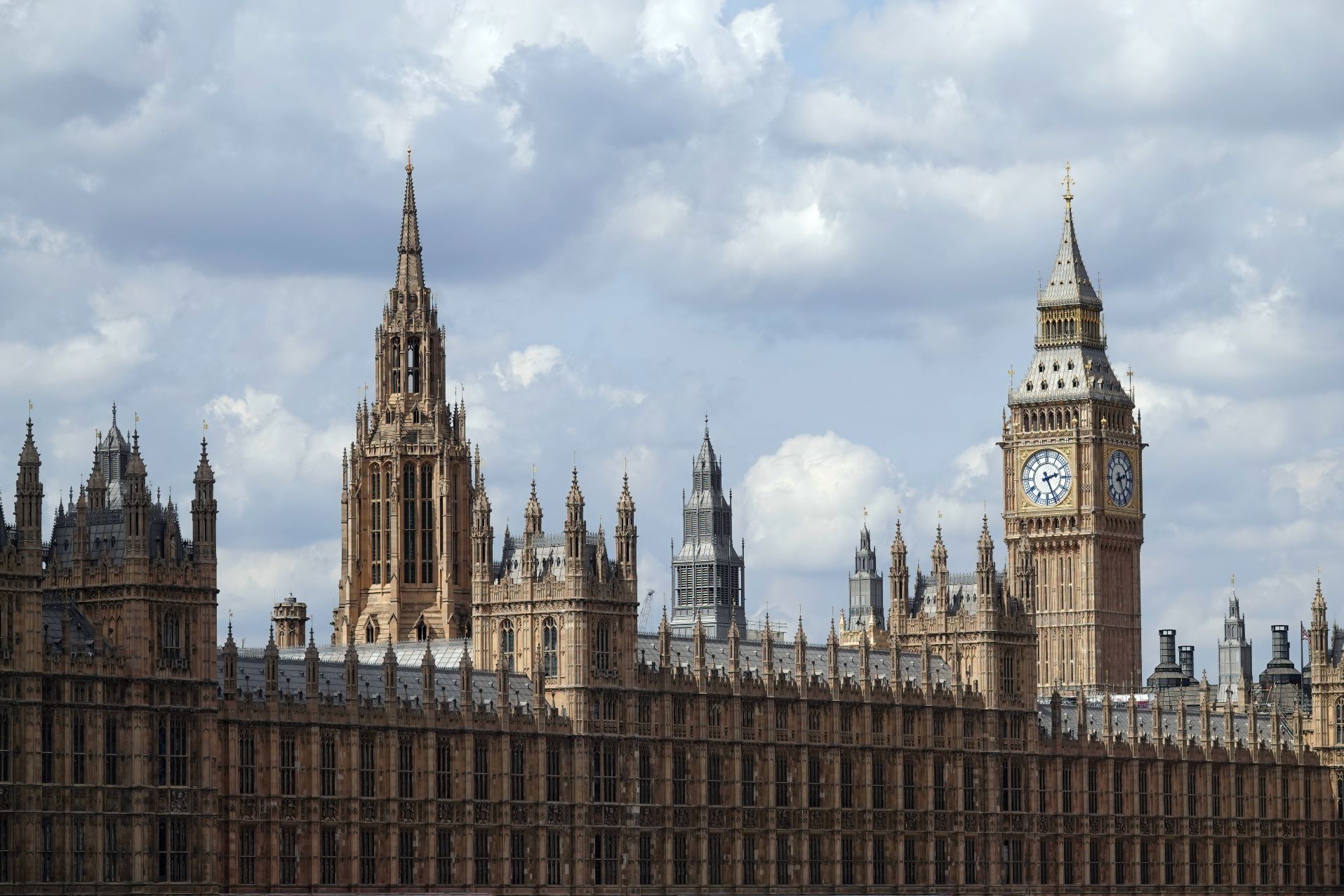The role of Woodsure in ‘Progress in improving the natural environment in England 2022/23’
26 February 2024
The Office for Environmental Protection (OEP) recently published their progress report of government’s stated ambitions and goals for the environment, relating to the 25 Year Environment Plan (25YEP) and the Environmental Improvement Plan (EIP23). To summarise, the report states that government is at risk; the current pace and scale of action is not enough to drive necessary progress and more must be done.
The OEP concluded that the EIP23 requires well-planned delivery to accomplish its targets, the current pace is insufficient, and significant progress is vital to prevent irreversible damage to the natural environment.
The lack of an effective and transparent delivery plan and mismanaged resources cause the OEP to call for further action, strategy, and implementation. The article will discuss and summarise information from the OEP’s report that is relevant to Woodsure and the industry, exploring the suggestions that the OEP is urging government to implement.
Sustainable timber (p. 96-97)
The OEP’s report uses two indicators rom the Outcome Indicator Framework to determine the UK’s progress in developing a sustainable and long-term timber supply; from 2018-2021:
- the percentage of annual tree growth harvested in English woodland has decreased by 13%, and;
- the total volume of timber brought to market from English sources has decreased by 4%.
In 2022, 58% of all woodland in England was sustainably managed – this figure has largely plateaued since 2017. The lack of overall change in this proportion indicates more must be done to encourage and incentivise sustainable woodland management.
Domestic combustion (p. 51-52)
Domestic combustion was also discussed in the report, with the key takeaway being:
“Technological approaches to tackle air pollution will not be sufficient by themselves. Education and communication are crucial to bring about changes in behaviour.”
The report comments on existing legislation and recent progress, such as: the restriction on the sale of wet wood through Ready to Burn, improved stove standards through Ecodesign, and increased smoke control area enforcement. The OEP note that whilst these have been positive changes, more is required to meet emissions targets. Legislation is just one action contributing to meaningful change in tackling air pollution; consumer education and clear communication from government is also necessary.
It is noted that the UK did not meet the 2020-2029 emission reduction commitments (ERC) in 2021. This early failure highlights the necessity of effective implementation of government’s proposed policies and measures, with successful execution potentially allowing the UK to be on track to meet the ERC for PM2.5 in 2023.
Effective implementation of policies and measures are crucial for targets to be met. The OEP reiterate the requirement that further measures must be taken as soon as possible to ensure that goals and targets set out in the 25YEp and the EIP23 can be met.
Technological approaches alone to minimise air pollution are deemed insufficient; education and communication are essential so that responsible use, safe practices, and changes in behaviour occur. Education is approached in two ways: cleaner burning practices and ensuring people understand the health impacts of air pollution. Government’s previously outlined plans for widescale and targeted communication campaigns regarding air quality have not been updated, but guidance has been published for local authorities.
The progress report covers a range of factors that are relevant to domestic combustion; there is hope that the UK could be on track to meet emissions targets, but this requires proposed policies and measures to be implemented effectively. The report highlights domestic combustion as requiring focus, with the lack of clear education and communication regarding responsible burning practices causing individuals to be misled and emissions goals to be missed.
Clean air recommendations (p. 55)
The progress report outlines four key clean air recommendations:
Clean air recommendation 1 suggests that local level communications should provide transparent and accessible information on local air quality and the steps being taken to improve it, ensuring that vulnerable groups are safeguarded and behaviour change is encouraged.
Clean air recommendation 2 focuses on effective monitoring, evaluation, and learning; government is recommended to work collaboratively with local authorities to discover any barriers local authorities encounter in attempting to improve air quality.
Clean air recommendation 3 is regarding oversight mechanisms; if emission reduction commitments are exceeded or projections signal that emissions are at risk of exceeding the commitment, measures must be in place to not only act upon these situations, but to transparently communication the actions that will be taken.
Clean air recommendation 4 requests that government review all limit and target values and aim to align as many as possible with World Health Organization (WHO) standards.
Concentrations in ambient air (p. 47-48)
Currently all air quality zones in England are compliant with the PM2.5 annual mean limit value of 20 μg/m³. However, government has set two additional Environmental Act 2021 targets regarding ambient air quality in England:
1. Annual mean concentration target for PM2.5 of 10μg/m³ in every monitoring station by the end of 2040.
2. At least a 35% reduction in population exposure for PM2.5 by the end of 2040 (in comparison to the 2016-2018 baseline period).
The annual mean concentration target is still double the WHO guideline of 5μg/m³. This is due to one-third of England’s ambient PM2.5 originating from transboundary sources (such as continental Europe and shipping). The OEP’s analysis shows that only 7% of air quality monitoring stations in England exceeded annual limits in 2022, a major improvement over 44% in 2019.
Eight attributes of a new and effective EIP (p. 184)
Concluding that the vision and ambition of the 25YEP and the EIP23 are at risk, the OEP drew up eight attributes that would create a new and effective EIP that has the current pace and scale of action to deliver what is needed.
1. Clearly translate vision into policies, commitments and actions for the whole of government.
2. Establish a clear governance arrangements that drive delivery on the ground.
3. Have a unifying overall delivery plan and one for each goal area.
4. Set and pursue clear and achievable interim targets that are as ambitious as possible in the areas needing most attention.
5. Make clear use of robust and current data and analyses that are well aligned with all targets.
6. Establish an evaluation framework and use it to generate feedback on actions and progress, to learn, and to improve delivery.
7. Diagnose the cause of adverse trends, identify the most urgent, harmful or widespread concerns, and develop effective and timely responses.
8. Develop assessment regimes that look more to the future, anticipate trends and project outcomes.
The role of Woodsure in facilitating effective progress
Sustainable timber
Woodsure is a certification body working to improve the standard of wood fuel in the UK. Woodsure certified fuel follows stringent legality checks to ensure firewood is clean and sustainable, from felling to supplying.
More woodlands require sustainable management in England – Woodsure is striving to improve sustainability and increase the number of sustainable woodlands in the UK by providing guidance and advice producers and suppliers.
Domestic combustion
HETAS, our sister company, actively encourage responsible burning in an effort to minimise emissions from wood burning stoves. HETAS provide advice and education that is rooted in professional, scientific expertise to help stove users, old and new, learn best practices and actively prompt behavioural changes.
Through the Ready to Burn scheme, the significant environmental and health impacts of burning wet wood are negated and consumers are able to burn more responsibly. By also educating consumers on why burning wet wood is irresponsible and dangerous, those who gather their own wood can act responsibly and ensure their wood has a moisture content of 20% or less.
The Cleaner Choice scheme sets the benchmark for lower emissions in appliances. Cleaner Choice appliances must be verified to produce at least 50% less emissions than the current requirements in UK smoke control areas, pushing manufacturers to continue to strive for lower emissions, supplementing responsible burning practices.
The OEP highlight multiple times throughout their report, regarding both domestic combustion and the wider context, that effective education and communication is crucial to bring about changes in behaviour. We actively share tips responsible practices on our advice hub and social channels to ensure consumers are acting responsibly.
Concentrations in ambient air
As the OEP’s report states, whilst there was a 17.3% reduction in population exposure of PM2.5 between 2017-2022, this number has plateaued over the past 3 years. Action is necessary for government to achieve its target of at least a 35% reduction in population exposure for PM2.5 by the end of 2040; the Cleaner Choice scheme and education on responsible burning practices are significant factors in achieving this target.
Clean air recommendations
Woodsure’s values align with the clean air recommendations in the progress report. Communication, education, and striving to continuously improve air quality are ambitions reflected through our work.
Many households in the UK rely on wood burners as their primary heat source and the EIP23 clearly states that the government is not considering a ban on domestic burning. However, to reach the goals and targets government has set out in the EIP23 and the 25YEP, the OEP’s report determines that prompt and effective action is required. The eight attributes of a new and effective EIP laid out by this progress report draw attention to actions that must be taken to ensure progress does not falter.
Progress in improving the natural environment in England, 2022/2023 discusses various other documents and reports, some of which are listed below.
- Policy paper – 25 Year Environment Plan
- Corporate report – Environmental Improvement Plan 2023
- Policy paper – Clean Air Strategy 2019
- Report – Achieving Government’s Long-Term Environmental Goals
- Report – The Second National Infrastructure Assessment
- Report – Progress in Reducing Emissions 2023 Report to Parliament
Related news

Upcoming downtime: Woodsure Supplier Hub, Search, and Ready to Burn search

Dutch sustainability scandal highlights the value of robust wood fuel certification

Emma Reynolds appointed as new Defra Secretary in Cabinet reshuffle
